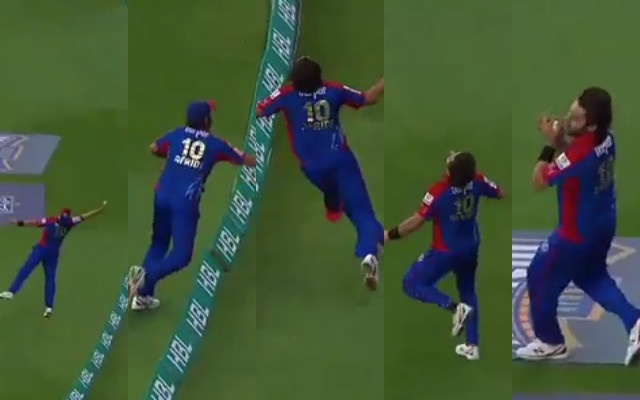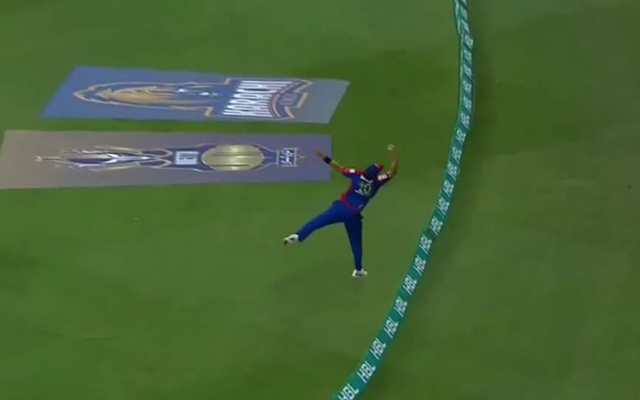Shahid Afridi’s PSL blinder could be controversial but why change the catching rules often?
Although it had stunned everyone, the act also came under scrutiny as a section of the fans felt that the catch was not in compliance with the new ICC rule.
3 Min Read


As cricket turns more a domain of acrobatics, the greater is becoming the scope of controversies in the game. Pakistani veteran Shahid Afridi’s spectacular catch for Karachi Kings to dismiss Quetta Gladiators’ Umar Amin in a Pakistan Super League (PSL) game in Dubai on Friday, February 23. Although had stunned the opponents, the audience as well as the commentators, the act also came under scrutiny as a section of the fans felt that the catch was not in compliance with the International Cricket Council’s (ICC) new catching law that came into effect in October last year.
According to the new catching law, a fielder touching the ball with the aim of catching it must either be on ground inside the boundary or his/her latest contact with the ground before coming into contact with the ball for the first time must take place within the ropes. Put in another way, the fielder going for the ball must take off from inside the boundary.
Was Afridi doing so while catching Amin’s lofted drive at the long-on boundary? He undoubtedly made a great judgment in catching the ball with one hand and threw it into the air while going out of the playing field but was it okay when he jumped back into the field from behind the ropes to settle with the catch? Or are the rules themselves not stable enough to nullify such catches?
Here’s the video of Shahid Afridi’s catch
In January 2015, a similar instance had happened in Australia’s T20 Big Bash League where Sydney Thunder’s Josh Lalor took Melbourne Stars’ Cameron White’s catch in a controversial manner, provoking the pundits to run around with the rule book. In that instance, Lalor took control of the ball after jumping over the boundary rope but not touching the ground beyond the ropes and the ball, at the same moment.
Here is Josh Lalor’s catch from BBL 2015
The act of jumping from beyond the boundary to re-take the ball while landing back in the territory of play is what makes the catch contrary to the law. The law had been changed in 2013 to make such catches legal but it was not officially adopted into the playing conditions of cricket’s top body.
Here’s Josh Lalor’s controversial catch
Players or rules, who are at fault?
But before dragging the players into the controversy, one needs to question the cricket rule-makers’ own juggling with the law. Before 2013, the law was similar to what it became in 2017, i.e., the fielder should take off from the playing field to secure the catch. In 2013, clause ‘19.4 Ball beyond the boundary’ of the Laws of Cricket was amended whereby a fielder could jump back from outside the ropes to take control of a catch and the idea was, it was said, to encourage the athletic beauty of the game. In 2017, again, the rule is negating that of 2013 and says the fielder has to be inside the boundary while going for the catches.
Shahid Afridi taking the catch

If rules are changed with such regularity, going back and forth, then none else but the administrators and rule-makers will be responsible for whatever controversies that occur on the ground. It would not be surprising if one finds people like Afridi not even knowing what the actual rule is. With fielding turning into a top class art in cricket and catching at the boundaries becoming more sensational, isn’t it high time that we lay down rules that are clear and consistent?
Bureaucracy certainly doesn’t comply with the spirit of the sports.
Follow CricTracker for all the latest cricket news, match updates and more.
Download Our App